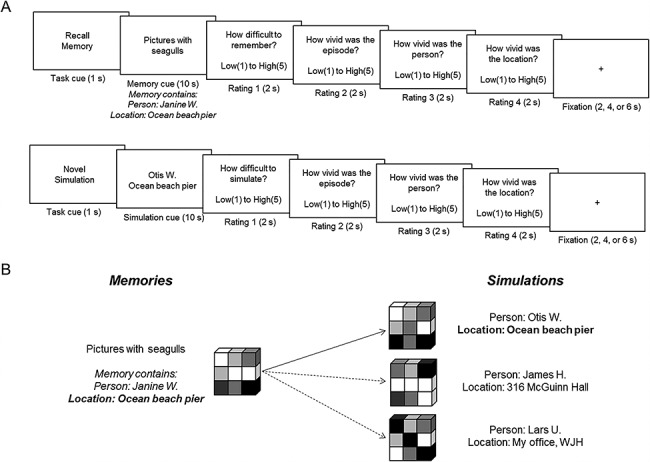Figure 1.

A. Representative trials from the episodic memory and simulation tasks. On each trial of the episodic memory task (top), participants were presented a memory cue that they had generated from an initial session (e.g., “Pictures with seagulls”). Each memory comprised two details, a person and a location (e.g., “Janine W.” and “Ocean beach pier”). Participants were instructed to recall the original episode focusing on the person and location comprising the memory, until the onset of the rating screens. On each trial of the episodic simulation task (bottom), participants were presented with recombined person and location details across separate memories (e.g., “Ocean beach pier” taken from the memory “Pictures with seagulls”). Participants were instructed to continually simulate a novel future episode that focused on and integrated the cued details until the onset of the rating screens. Durations are shown on the bottom of each frame. B. Overview of the pattern similarity analysis. We calculated for each participant the similarity between memory and simulation trials when matched as a function of a shared event detail (e.g., the shared location of “Ocean beach pier”; see solid arrow). To assess the detail specificity of reinstatement, these matching correlations were compared to their mismatching counterparts (i.e., where each memorial detail was correlated to all other simulations not containing that detail; see dashed arrows). Both matching and mismatching correlations were computed for details as a function of high and low vividness of that detail during episodic simulation (see full text for details).
